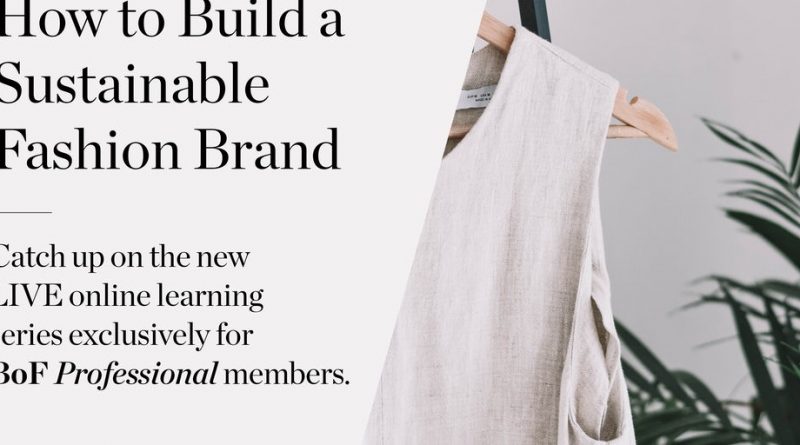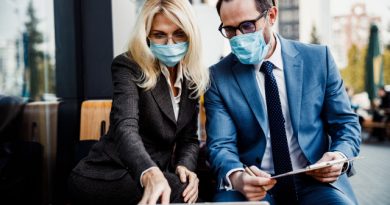How to Build a Sustainable Fashion Brand – The Baseline | News & Analysis, BoF Professional
LONDON, United Kingdom — What does it take to build a fashion brand that is good for the planet, the people in it and still turns a profit?
In the first masterclass in #BoFLIVE’s new series, How to Build a Sustainable Fashion Brand, Senior Correspondent Sarah Kent was joined by Better Work’s Tara Rangarajan and sustainability consultant Michael Sadowski for a virtual panel discussion focused on defining the challenges, the opportunities and how to get started building a sustainable fashion brand.
“It’s not just a checkmark [like] ‘yeah we care about social and environmental issues.’ It’s really about the way that you operate day in and day out,” Rangarajan said. When it comes to establishing a responsible business model, one of the challenges brands contend with is this notion that there isn’t a business case for acting on sustainability issues, while smaller brands may feel that effecting change is beyond their capacity and resources. Rangarajan and Sadowski break down these obstacles and provide actionable solutions to help companies meet their sustainability targets.
Key Lessons from Masterclass 1: The Baseline
- Establish Core Values: “What’s important is that the business be based on a set of values and that those values are integrated into every operating decision that’s made in the company,” Rangarajan said. Often brands struggle to fully integrate a sustainability agenda because “they try [to] tack it on the side.” Leaders and executives must ask themselves whether they are committed to ensuring that the business has a positive impact on the planet and the people who make the products.
- Start Asking Questions: Fostering change requires businesses to reassess their existing practices right across the business and the supply chain. For example, what materials are being used, who are your contractors, which factories are being used to create your product and are those factories complying with national laws and international standards?
- Hold Yourself Accountable: Set clear goals, be transparent about progress and challenges along the way and make sure the whole business is accountable for meeting any environmental and social targets. It’s vital to understand and drive transparency in the supply chain too, and to communicate all this work effectively to consumers.
- Practice Long-Term Thinking: Shifting the business to operate more responsibly may come at a cost, but that should be measured against the long-term impact of such investments. “It may not always be a short-term gain, but in many cases we are seeing that there are incredible gains to be made on the business side from investing in social and environmental issues.”
- Don’t Reinvent the Wheel: There is a wealth of resources to help companies looking to start deepening their understanding. Sadowski pointed to Textile Exchange and the Sustainable Apparel Coalition as some good initial resources. Partnerships with other brands and suppliers are also important to drive change.
- Define Metrics for Success: Brands can’t start operating more sustainably overnight, but they can set clear targets to guide and measure progress. As a first step, companies should map their supply chain to understand their environmental and social impact.
Supplementary Reading:
To support your learning, the expert guests from this masterclass recommend the following key readings:
- Textile Exchange Preferred Fiber & Materials Market Report 2020
- Apparel and Footwear Sector Science-Based Targets Guidance
- Ecotextile News June/July 2020 Issue
- Sustainable Apparel Coalition
- Nike FY19 Impact Report
- H&M Group Sustainability Report 2019
- Progress and Potential: How Better Work Is Improving Garment Workers’ Lives and Boosting Factory Competitiveness
- The Better Work Programme
- Covid-19: Action in the Global Garment Industry
Register for the next masterclass in How to Build a Sustainable Fashion Brand: Designing with Difference
What materials, design processes and choices can minimise a garment’s environmental impact? How can design align with doing social good? The second masterclass in BoFLIVE’s new online learning series establishes design practices and principles that are better for the planet and people.
Masterclass 2: Learning Outcomes
By the end of the session, attendees should be able to:
- Describe the impact of design decisions
- Classify elements of the design process that can be changed to improve social and environmental impact
Also, stay tuned for the next monthly episode of BoF’s online learning series How to Build a Sustainable Fashion Brand.
Masterclass 3: Tracking and Traceability
Key questions answered
- What transparency and traceability strategies are required to effect meaningful change?
- Why is traceability so challenging?
Learning Outcomes
- Explain how transparency is linked to responsibility
- Identify supply chain improvements
Masterclass 4: Buying Better
Key questions answered
- How do you buy responsibly?
- What best practices enable the entire supply chain to act responsibly?
Learning Outcomes
- Identify collaborative models to drive change
- Propose improvements to partner relationships
Masterclass 5: The Case for Culture
Key questions answered
- How do companies create a culture that drives responsible business practices?
- What should companies be focusing on and why?
Learning Outcomes
- Identify factors that enable more inclusive and responsible operations
- Establish measurable objectives
Visit our calendar to find details of upcoming digital events and RSVP.



